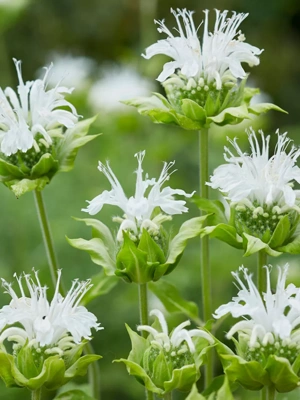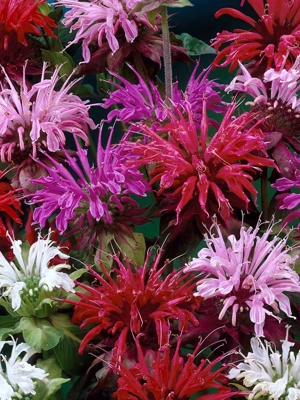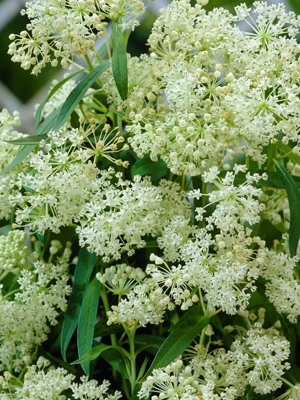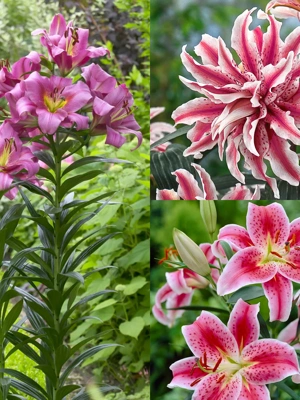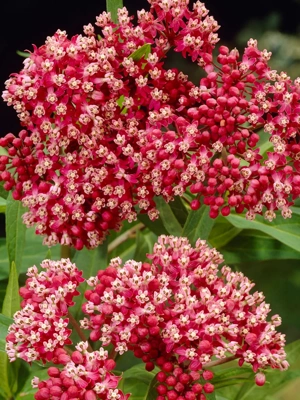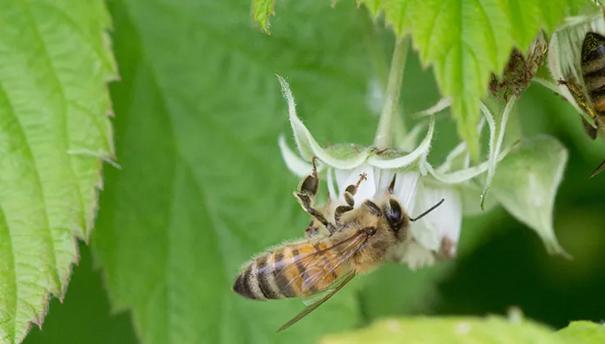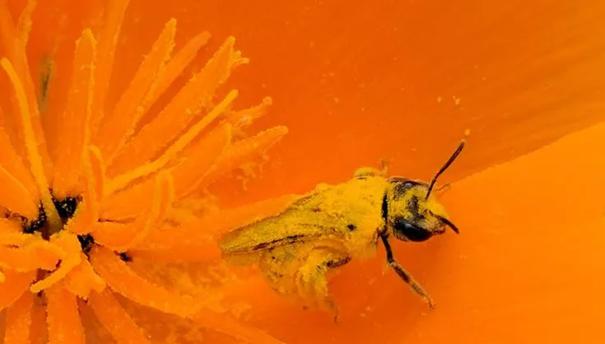Meet the Pollinators
Bees, butterflies, moths, birds, flies - even bats! - pollinate flowers
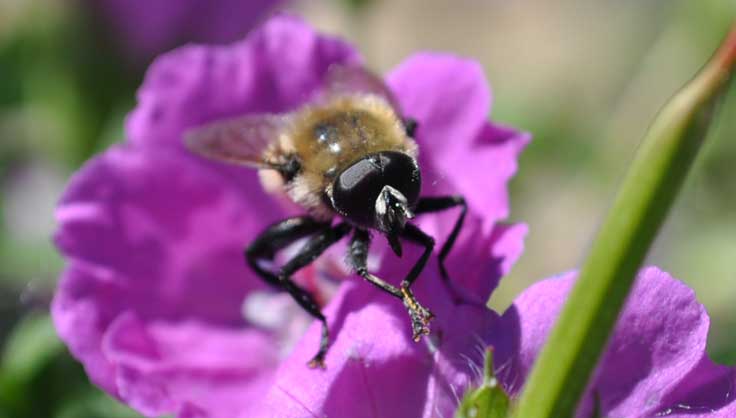 Lesser-known pollinators, such as this hoverfly, are vital for flower pollination, both in gardens and in the wild. Photo: Suzanne DeJohn
Lesser-known pollinators, such as this hoverfly, are vital for flower pollination, both in gardens and in the wild. Photo: Suzanne DeJohn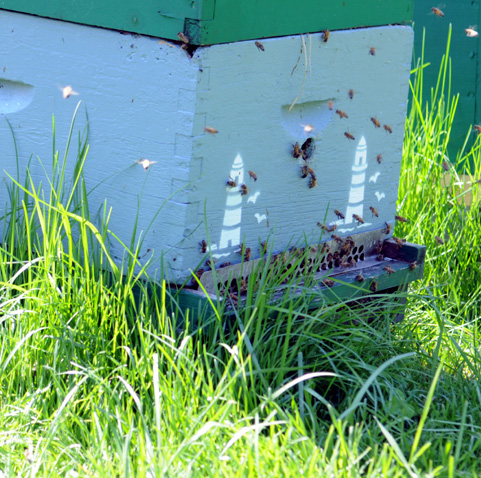
Our headquarters in Burlington, VT, is host to these hives. The resident honeybees pollinate the plants in our employee, display, and test gardens.
Of the estimated 240,000 species of flowering plants worldwide, 91 percent require an insect or animal to distribute their pollen in order to set fruit and seed. Pollinators are essential to ensuring reproduction and genetic diversity among plants. The world's plant life could not exist without them!
Despite the critically important service they provide, pollinators have historically been taken for granted. And now many species are in jeopardy.
Most people recognize that honeybees are important pollinators. However, many species of butterflies, moths, birds, flies — even bats and othere mammals — also pollinate flowers. Researchers are still discovering how valuable and efficient many of these lesser-known pollinators are.
You can help improve the plight of pollinators, starting in your own backyard. Imagine a patchwork of pollinator gardens all across the country building and supporting diverse communities of beneficial insects!
The Real Purpose of Flowers
Flowers inspire passion; however, while some of us live for our flowers, they certainly don't exist for us. Flowers are the reproductive organs of a plant.
When a bee lands on a flower to sip nectar, it inadvertantly picks up grains of sticky pollen from the (male) anther. When the bee visits another flower and brushes against that flower's (female) stigma, some of that pollen is transferred. The pollen then fertilizes the ovules, which leads to seed production.
Over the last 100 million years, flowers have evolved an extraordinary range of features to lure pollinators, from color and scent to petal design and bloom time. And the shape and arrangement of the reproductive parts often fasciliates the pollinator's ability to transfer the pollen.
For example, lilies have ridged petals to guide bees to the nectar-rich center; concentric rings on blanket flowers create a target focused on the nectar; delphiniums have a special petal that serves as a landing platform for bees.
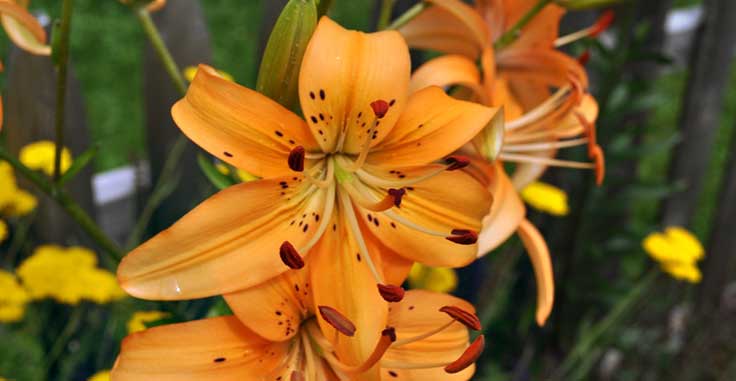 Ridges on the petals of this lily guide pollinating insects to the nectar at the center. Along the way, the insects inadvertantly pick up pollen from the anther. Photo: Suzanne DeJohn
Ridges on the petals of this lily guide pollinating insects to the nectar at the center. Along the way, the insects inadvertantly pick up pollen from the anther. Photo: Suzanne DeJohn 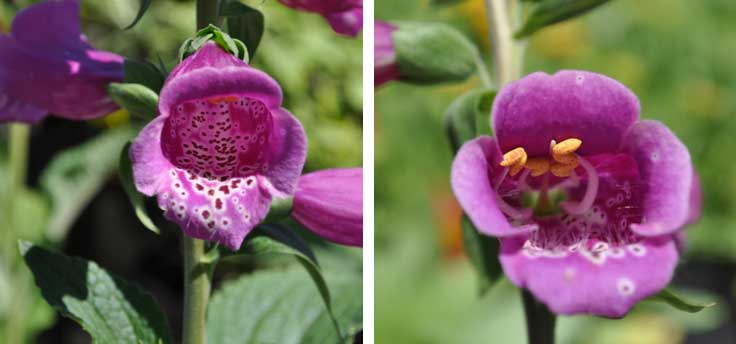 Left: Foxgloves have distinct spots on their lower petals to lure pollinators in. Right: Once inside, the pollinator brushes against the pollen-producing anthers located on top interior surface. Photo: Suzanne DeJohn
Left: Foxgloves have distinct spots on their lower petals to lure pollinators in. Right: Once inside, the pollinator brushes against the pollen-producing anthers located on top interior surface. Photo: Suzanne DeJohn Meet the Pollinators
Thousands of different species helps plants pollinate, from bees, butterflies and ants to bats and birds. Listed here are some of the most important pollinators in the U.S. and the ones you are most likely to see in your backyard.
Bees
Bees are the world's workhorse pollinators, with over 40,000 different species worldwide and 4,000 in the U.S. alone. They carry and deliver pollen grains to more flowering plants than any other group. And bees are well adapted to this task. Their hind legs are hairy to hold pollen. Some species also have special sacs on their legs which hold pollen.
Bees are able to visit dozens or hundreds of flowers in one day searching for nectar and pollen. They are especially attracted to brightly colored yellow and blue flowers with a sweet fragrance.
While honeybees are the best-known bee, most pollination is actually done by wild solitary bees, like mason bees, that do not live in hives.
Honeybee (Apis mellifera)
The honeybee is a European species of bee that was introduced to North America in colonial times. Today, U.S. beekeepers tend over 3 million colonies of honeybees. Those honeybees are generalists, which means they visit many different kinds of flowers, from fruit trees to clover.
Bumblebee (Bombus spp.)
The large bumblebees you see flying in the early spring are queens just out from hibernation. They have emerged from their long underground hibernation and are feeding and looking for an underground cavity to nest in. Later in the summer, you will see the worker bumblebees out foraging.
Unlike honeybees, bumblebees are capable of something called buzz pollination. This is when the bee lands on a flower and vibrates very quickly, stimulating the anther to release even more pollen.
Mason Bee (Osmia spp.)
Mason bees can be found throughout most of the United States. They are solitary and nest in hollow stems, woodpecker drillings and insect holes in trees. They are common near woodlands, in towns and suburbs and are excellent pollinators of many plants.
Squash bee (Peponapis spp.)
Squash bees are well-adapted specialists. For example, the hoary squash bee depends entirely on squash and pumpkin. These bees are solitary and nest in burrows in the ground that approximately 10 inches deep and about the diameter of a pencil.
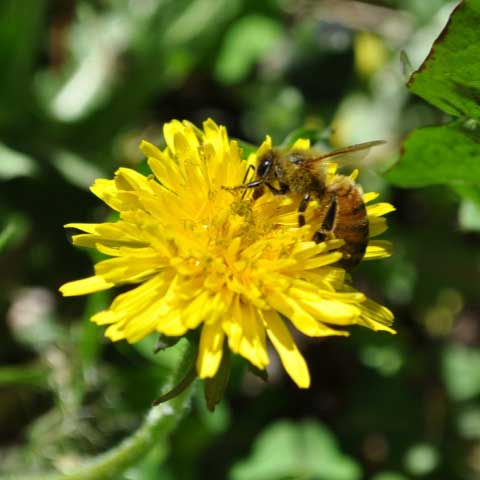
Honeybee. Photo: Suzanne DeJohn
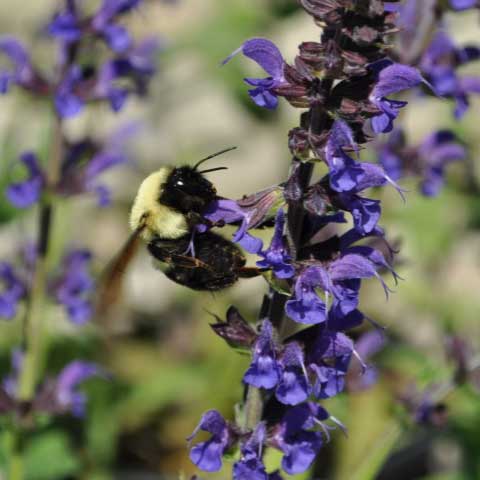
Bumblebee. Photo: Suzanne DeJohn
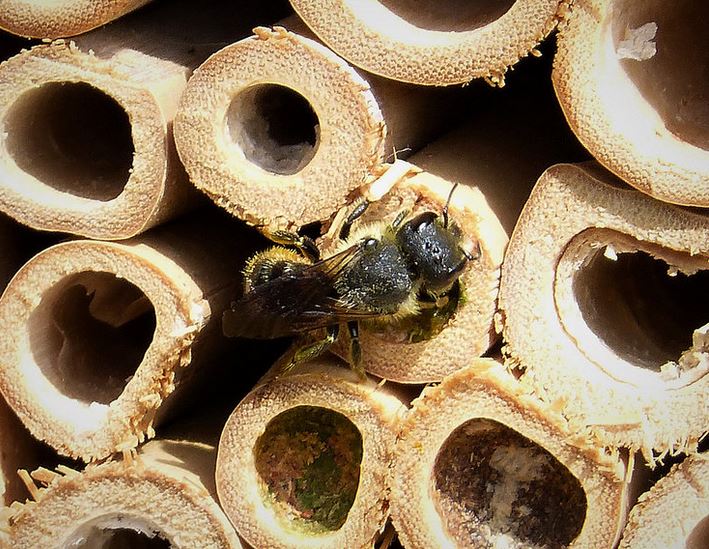 Mason bee. Photo: Gail Hampshire
Mason bee. Photo: Gail Hampshire 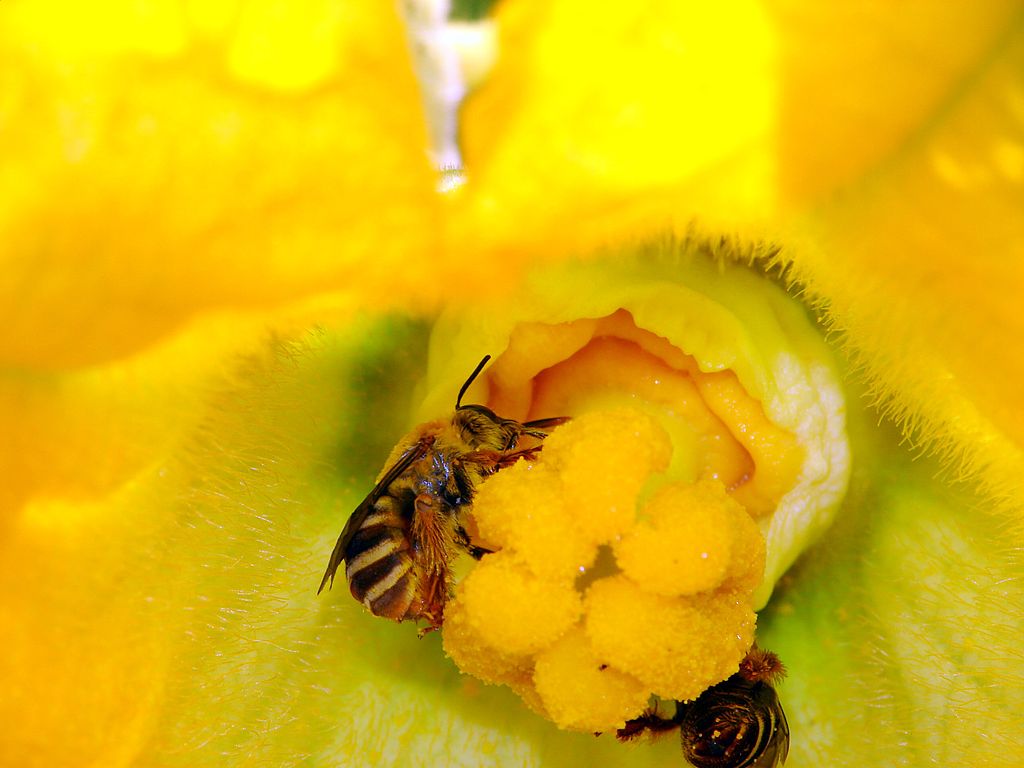 Squash Bee Photo: USDA
Squash Bee Photo: USDA Butterflies and Moths
Butterflies are some of the world's most beautiful pollinators. In the U.S. there are about 700 different species. Butterflies love brightly colored yellow and pink flowers and those with flat-topped clusters of flowers that they can land on. They have a long proboscis which they will use to probe deep into flowers searching for nectar.
Moths are less showy than butterflies, but even more numerous with 10,000 different species in the U.S. Unlike most other pollinating insects, moths are active primarily at night. They are attracted to white or light-colored flowers with a strong, sweet scent, such as nicotiana, datura, moonflowers and various yellow evening primroses.
Monarch butterfly (Danaus plexippus)
Perhaps the best known butterfly is the monarch. The larval sate (a green and yellow striped caterpillar) feed almost exclusively on milkweed, although the adult butterflies visit many different kinds of flowers. Monarchs migrate each year between the U.S. and Mexico and so there are many vital pockets of habitat along their migration route.
Zebra Heliconian Butterfly (Heliconius charitonius, sometimes called a "longwing")
Unlike most butterflies, zebra heliconians feed not only on nectar, but are also able to collect and consume pollen with their proboscis. They digest the pollen, and absorb its proteins. This extra nutrition allows the adult to mate, lay eggs and survive for as long as 6 months.
Hawkmoth (Manduca spp.)
Large hawkmoths the size of hummingbirds pollinate jimsonweed — the largest native flower in the U.S. — at night.
Flies
Flies pollinate a huge variety of flowers, including many common garden flowers. Many syrphid flies visit tiny flowers.
Syrphid fly (Syrphidae spp.)
In order to avoid predation by birds, many species in this family have evolved to look and even behave like bees. These flies are present throughout the growing season but are particularly common in the spring and fall.
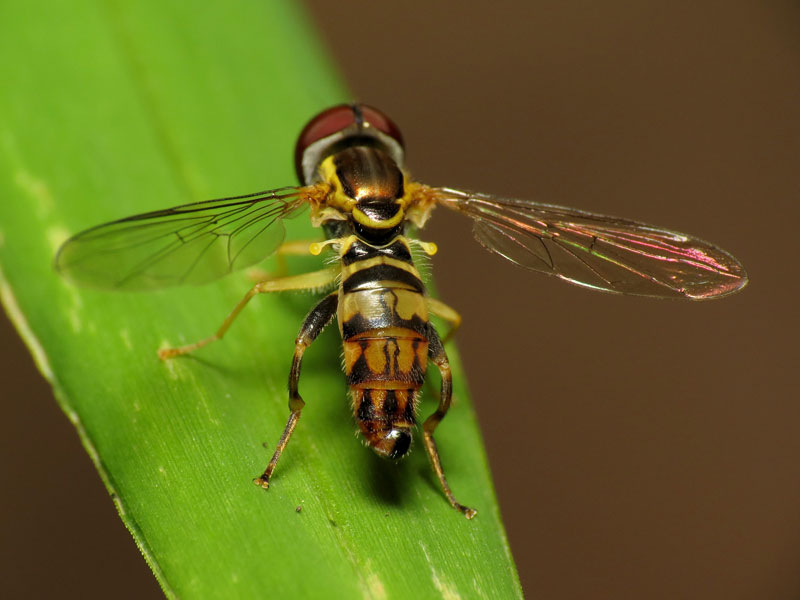 Syrphid fly Photo: Katja Schulz
Syrphid fly Photo: Katja SchulzHummingbirds
Hummingbirds are the most spectacular of the common pollinators, with their often iridescent plumage and spectacular flight displays. Hummingbirds are most attracted to nectar-rich red tubular flowers.
Ruby-Throated Hummingbird (Archilochus colubris)
The tiny ruby-throated hummingbird weighs only a tenth of an ounce, but can consume 50 percent of its weight in nectar a day.
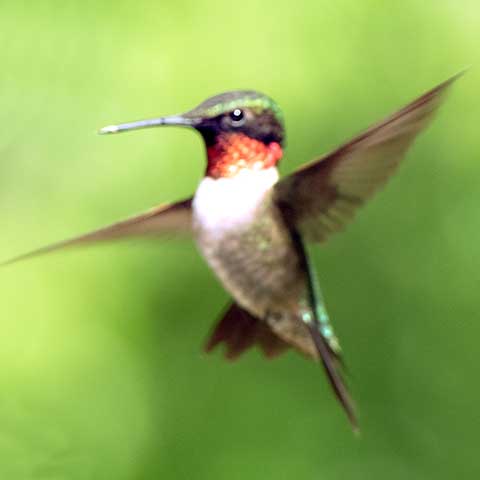
Hummmingbird. Photo: Jada Roberge
Bats
Bats are the world's most important pollinating mammal. While most bats in the U.S. feed on insects, there are several species in the southwestern U.S. that feed on fruit and nectar and are vital pollinators of desert plants, especially cacti.
Lesser Long-Nosed Bat (Leptonycteris curasoae)
This bat is one of the primary pollinators of the magnificent saguaro cactus. The migrating bats pollinate the cactus flowers as they feast on nectar. Later in the summer, they eat the fruit of those same plants and help disperse the seeds. This bat is only about three inches long, but its tongue can be as long as its body.
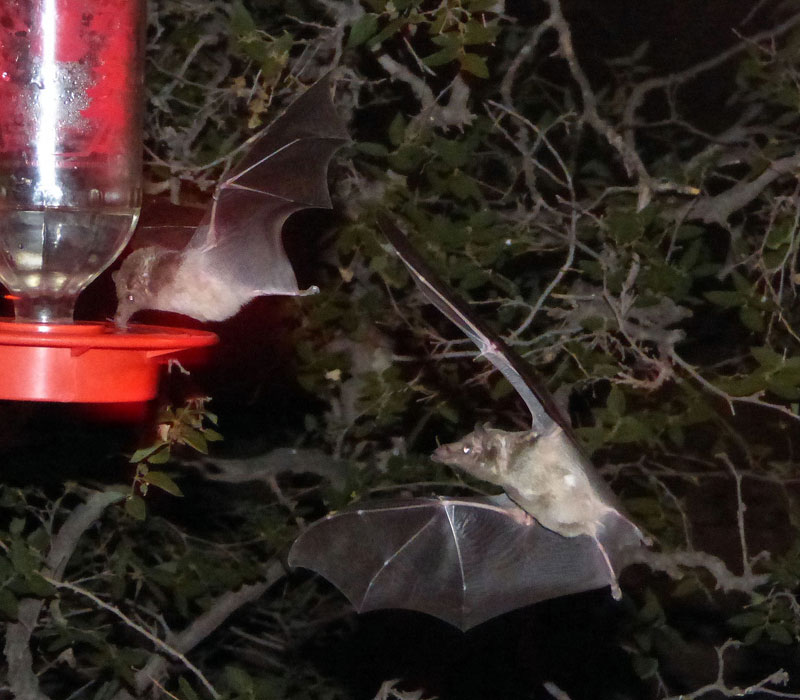 Lesser long-nosed bat Photo: Gail Hampshire
Lesser long-nosed bat Photo: Gail Hampshire Last updated: 12/13/2022
Print this Article:
Related items
Related Articles
Get the Dirt
Stay up to date on new articles and advice. Please fill out the information below.

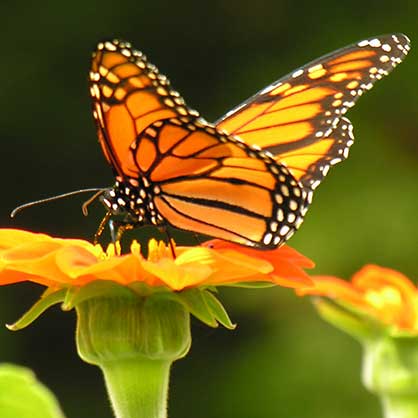
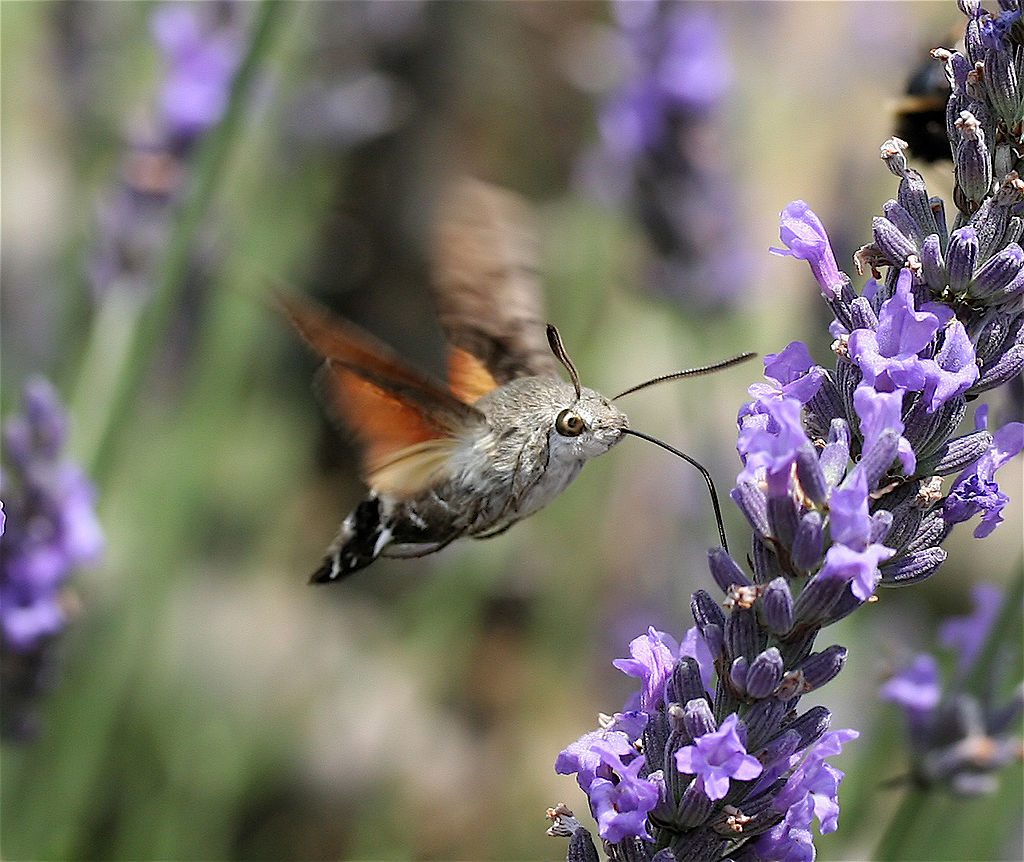 Hummingbird hawk moth
Hummingbird hawk moth 

